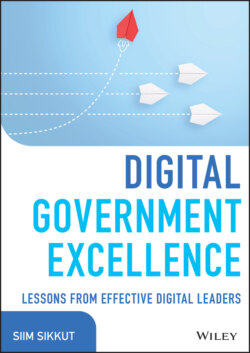Читать книгу Digital Government Excellence - Siim Sikkut - Страница 53
You Did End Up Taking the Work of Saving Phoenix into Your Own Portfolio. How Did You Go about Fixing It?
ОглавлениеThe more you start to demand that the system of government or a large corporation change, the more you are preaching about it, the more people will say, “Well, do something.”
We were never charged with fixing the existing Phoenix; I still do not think that was doable anyway. Nothing worked in it: government staff were getting overpaid, underpaid, not paid. There was no architecture done, no data, no testing, no backup plan, you name it. There was no way to get out of that mess in any other way than starting a new system.
In parallel, we had been telling all the procurement officers in the GC doing digital procurement to please stop giving specifications out and instead give out the problems for procurement instead. Then the really smart people that do tech outside of government can come up with a whole bunch of different solutions. And we might use them all, why use just one? So, we gave ourselves the task to run the country's most important open procurement up to that point to replace Phoenix. We started putting our policies to work to execute, pulling all the tools we had brought in and out.
We went to the market and said, “We want a cloud-based software-as-a-service human resources and pay solution; who is interested? We got about a dozen interested parties in a room. Then we said that the process is going to be like the Hunger Games, with gates to go through where we would up the requirements as they passed through the gates. We did not want any paper response; we wanted to see the actual software change and work against our requirements at each gate.
The procurement people at first thought we would have to pay the suppliers as they were going through the process. I said no to that. So, we did three gates, five months, the last gate was with real anonymized user data and suppliers had to show that they could pay the people properly. We ended up with three final suppliers—not by prescribing a solution, but by working with suppliers at each gate and working from the problems up. In less than six months, the government had three viable options, whereas nothing had been achieved for years before.
We put our money where our mouth was, and we showed what can be done with a different approach. It shows that you have to get your hands dirty on some of this stuff.
